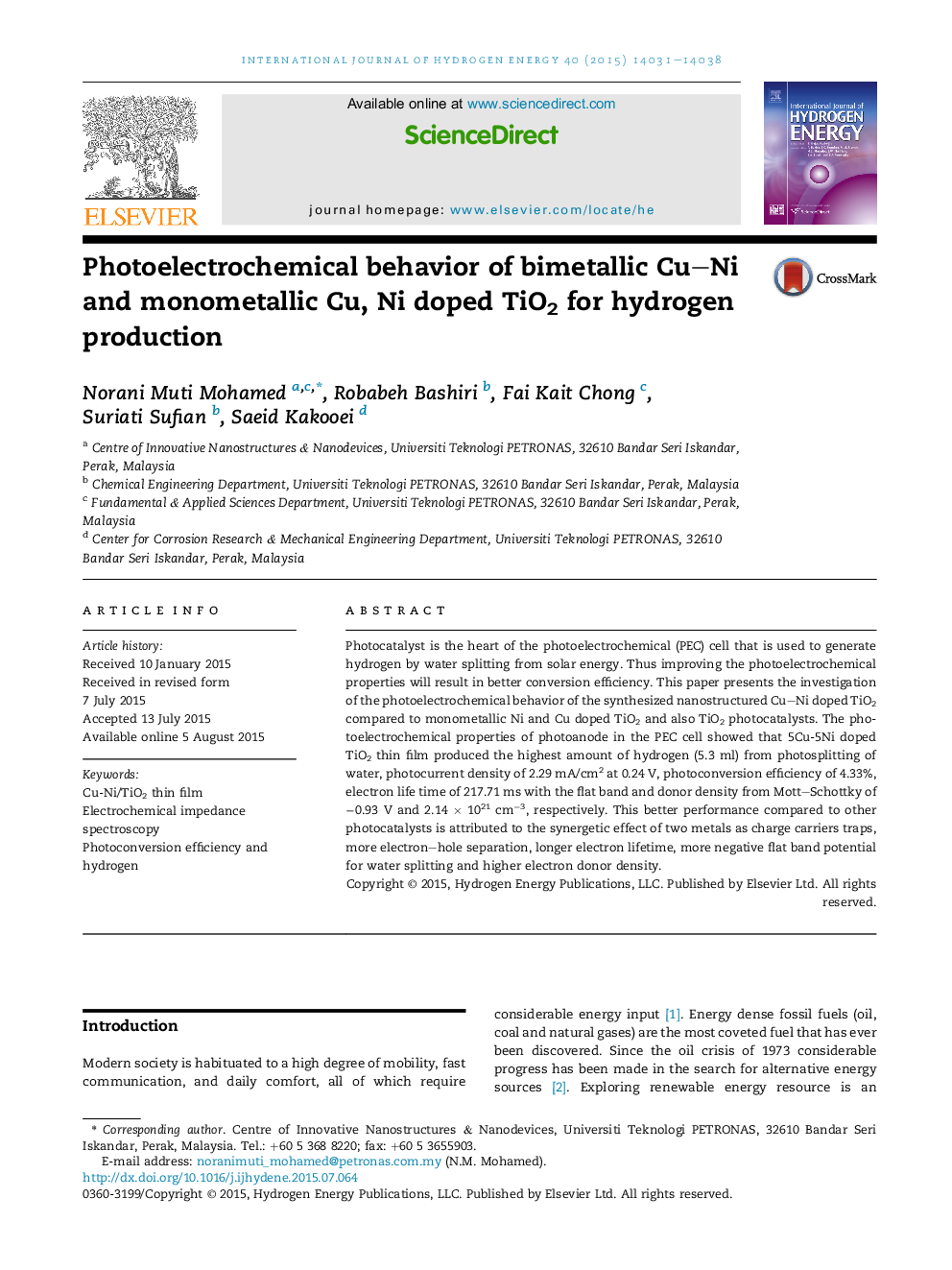| Article ID | Journal | Published Year | Pages | File Type |
|---|---|---|---|---|
| 1270461 | International Journal of Hydrogen Energy | 2015 | 8 Pages |
•Synthesis of Cu–Ni/TiO2 using sol-hydrothermal and deposition by screen printing.•Maximum photoconversion efficiency for Cu–Ni/TiO2 is 4.43% at −0.109 V.•Cu–Ni/TiO2 has higher charge carrier density, lifetime and lower resistance.•Cu–Ni/TiO2 with the desirable flat band (−0.93 V) generated 5.3 ml hydrogen.•Synergetic effect of Cu and Ni in the lattice causes higher photocatalytic performance.
Photocatalyst is the heart of the photoelectrochemical (PEC) cell that is used to generate hydrogen by water splitting from solar energy. Thus improving the photoelectrochemical properties will result in better conversion efficiency. This paper presents the investigation of the photoelectrochemical behavior of the synthesized nanostructured Cu–Ni doped TiO2 compared to monometallic Ni and Cu doped TiO2 and also TiO2 photocatalysts. The photoelectrochemical properties of photoanode in the PEC cell showed that 5Cu-5Ni doped TiO2 thin film produced the highest amount of hydrogen (5.3 ml) from photosplitting of water, photocurrent density of 2.29 mA/cm2 at 0.24 V, photoconversion efficiency of 4.33%, electron life time of 217.71 ms with the flat band and donor density from Mott–Schottky of −0.93 V and 2.14 × 1021 cm−3, respectively. This better performance compared to other photocatalysts is attributed to the synergetic effect of two metals as charge carriers traps, more electron–hole separation, longer electron lifetime, more negative flat band potential for water splitting and higher electron donor density.
